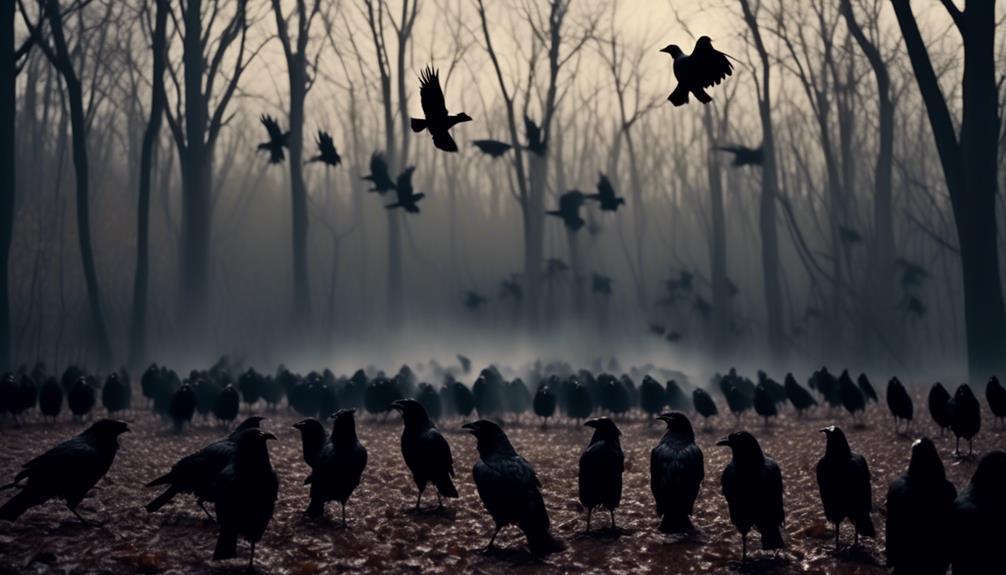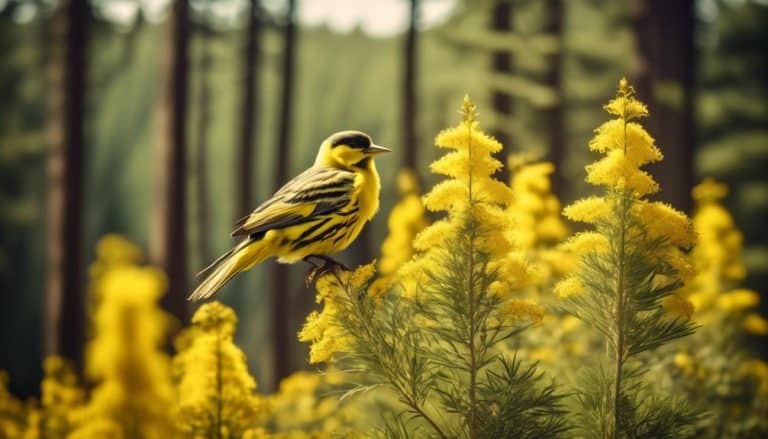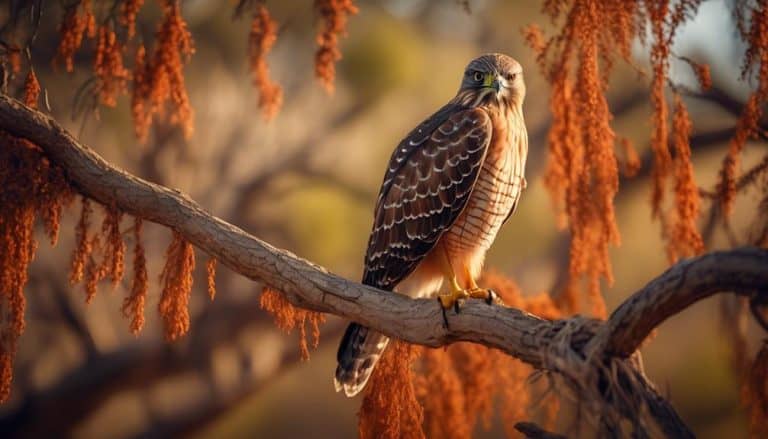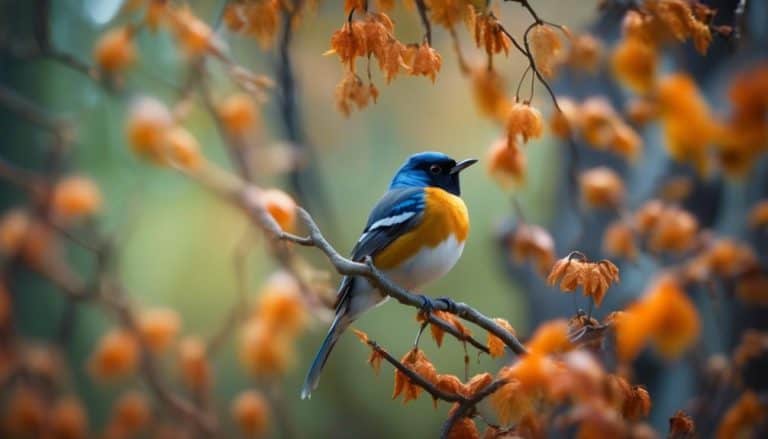As I stood beneath the shadowy canopy of the ancient oak trees, I couldn't help but be captivated by the presence of these enigmatic creatures.
The large black birds of Pennsylvania, with their sleek feathers and piercing eyes, seem to possess a wisdom that is both awe-inspiring and mysterious.
Their existence in this diverse ecosystem raises intriguing questions about their identification, habitat, behavior, diet, and ecological importance.
Join me on this journey as we unravel the secrets of these remarkable birds, delving into their world and discovering the significance they hold within the great tapestry of nature.
Identification and Characteristics

When it comes to identifying large black birds in Pennsylvania, it's important to consider their physical characteristics and behaviors in order to accurately distinguish between different species. One key aspect to look for is their nesting habits. Some large black birds, such as the common raven (Corvus corax), build large stick nests in tall trees or on cliffs. These nests are often bulky and can measure up to three feet in diameter. On the other hand, the American crow (Corvus brachyrhynchos) constructs smaller, more compact nests using twigs, grass, and other plant material. Understanding these nesting preferences can provide valuable clues in identifying these birds.
Another factor to consider is their migration patterns. While some large black birds are permanent residents in Pennsylvania, others are migratory. For example, the common raven is a resident species and can be found year-round in the state. In contrast, the American crow is a partial migrant, with some individuals staying throughout the year while others migrate south during the winter months. This information can be helpful in distinguishing between these two species based on their presence during different times of the year.
Habitat and Distribution
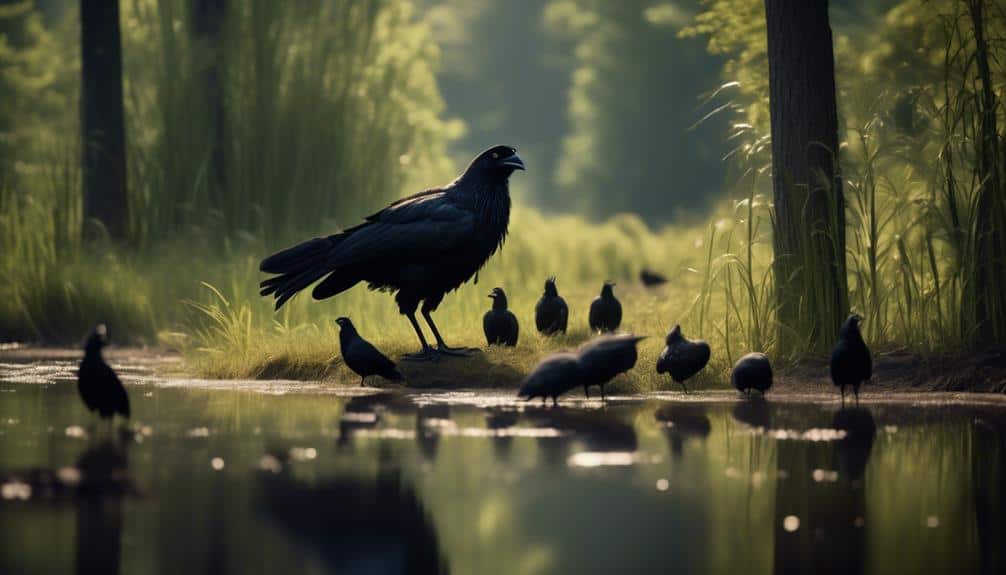
Large black birds in Pennsylvania have a diverse range of habitats and distributions throughout the state. These birds are known to inhabit a variety of environments, including forests, wetlands, urban areas, and agricultural fields. They're adaptable and can thrive in both natural and human-altered landscapes.
In terms of distribution, large black birds can be found throughout Pennsylvania, from the western part of the state to the eastern regions. Some species, such as the common raven and the American crow, have a wide distribution and can be observed across the entire state. Others, like the fish crow and the turkey vulture, may have more localized distributions.
Migration patterns also play a role in the habitat and distribution of these birds. Some species, like the common raven, are non-migratory and can be found in Pennsylvania year-round. Others, such as the turkey vulture, are migratory and may only be present during certain times of the year.
Population trends of large black birds in Pennsylvania vary among species. While some, like the common raven, have stable populations, others, such as the fish crow, have experienced declines in recent years. These changes in population numbers may be influenced by factors such as habitat loss, pesticide use, and climate change.
Behavior and Social Structure
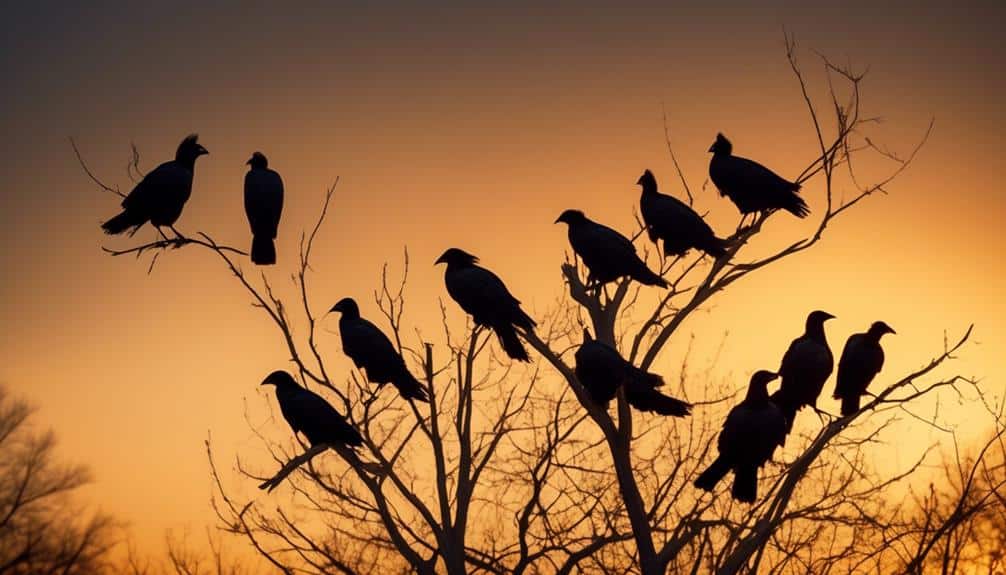
The behavior and social structure of large black birds in Pennsylvania exhibit fascinating patterns that provide insights into their ecological roles and interactions within their respective communities. These birds, known for their intelligence and adaptability, display a complex dominance hierarchy that influences their social interactions and breeding success.
- Dominance Hierarchy:
Large black birds establish a clear dominance hierarchy within their groups, with the most dominant individuals occupying the highest positions. This hierarchy is often determined through aggressive displays and vocalizations, with the dominant birds asserting their authority over subordinate individuals.
Subordinate birds within the group generally exhibit submissive behaviors, such as avoiding direct eye contact and making way for the dominant individuals. This hierarchical structure helps maintain order and minimize conflicts within the group.
- Mating Rituals:
During the breeding season, large black birds engage in elaborate mating rituals to attract mates and establish pair bonds. These rituals often involve impressive aerial displays, intricate vocalizations, and intricate nest-building behaviors.
Male birds compete for the attention of females by showcasing their physical prowess and vocal abilities. The most dominant males generally have a higher chance of securing a mate and passing on their genes to the next generation.
Understanding the behavior and social structure of large black birds in Pennsylvania provides valuable insights into their ecological roles and the dynamics of their communities. Further research into these fascinating creatures will help us unravel the intricacies of their social interactions and contribute to our understanding of avian behavior as a whole.
Diet and Feeding Habits
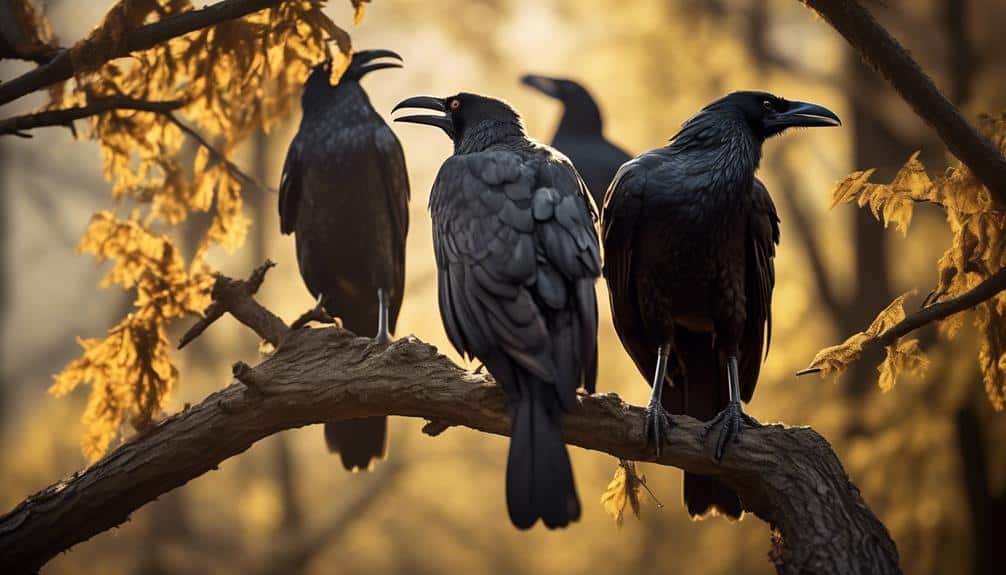
To gain a comprehensive understanding of the ecological niche occupied by large black birds in Pennsylvania, it's essential to delve into their dietary preferences and feeding habits. These birds play a crucial role in predator-prey dynamics and have distinct feeding strategies that contribute to their survival and reproduction.
Large black birds in Pennsylvania exhibit a diverse diet, consisting of both animal and plant matter. They're opportunistic feeders and display a wide range of feeding habits. These birds consume small mammals, reptiles, amphibians, and insects, which they catch using their sharp beaks and agile flight maneuvers. Additionally, they also feed on fruits, seeds, and carrion, displaying their adaptable nature.
Migration patterns also play a significant role in the feeding habits of these birds. During migration, they may rely on specific food sources available along their route, such as berries or insects. This ensures their energy requirements are met, allowing them to complete their long-distance journeys successfully.
Understanding the diet and feeding habits of large black birds in Pennsylvania provides insights into their ecological role and their interactions with other species. By studying their feeding preferences and behaviors, we can better appreciate their impact on local ecosystems and the intricate web of predator-prey dynamics they're a part of.
Ecological Importance and Conservation Efforts
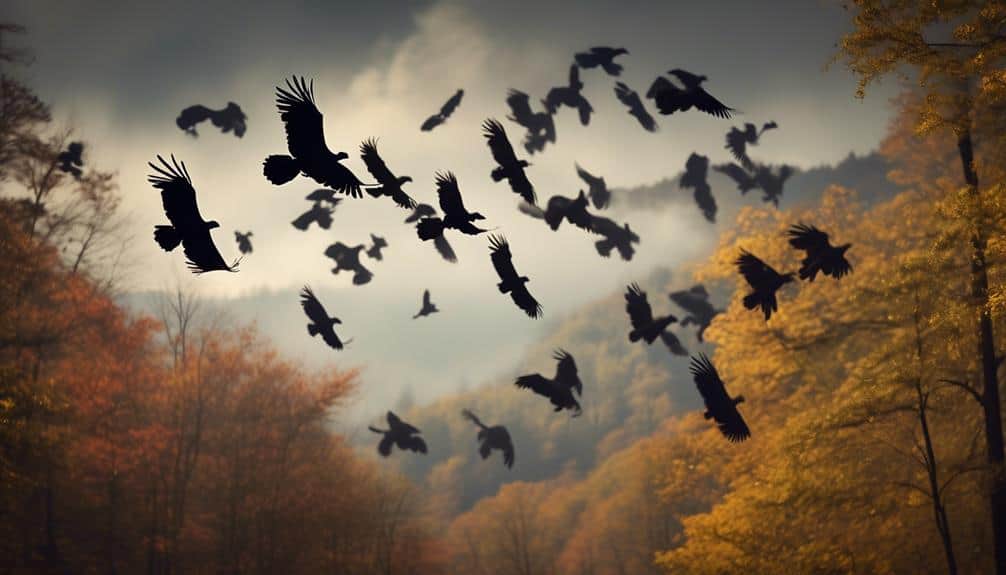
Having explored the dietary preferences and feeding habits of large black birds in Pennsylvania, it's now crucial to examine their ecological importance and the ongoing conservation efforts dedicated to their preservation.
- Ecological Impact:
- Large black birds play a vital role in maintaining the ecological balance in Pennsylvania's ecosystems. They act as scavengers, feeding on carrion and thus preventing the spread of diseases by removing carcasses from the environment.
- These birds also aid in seed dispersal by consuming fruits and then excreting the undigested seeds in different locations, contributing to plant diversity and forest regeneration.
- Population Decline:
- Unfortunately, large black bird populations in Pennsylvania have experienced a significant decline in recent years. This decline can be attributed to several factors, including habitat loss due to urbanization and deforestation, pollution, and the use of pesticides affecting their prey availability.
- Additionally, human activities such as hunting and trapping have further contributed to the decline of these birds.
Conservation Efforts:
To counteract the population decline and preserve the ecological importance of large black birds, various conservation efforts are underway in Pennsylvania:
- Habitat preservation initiatives aim to protect and restore suitable habitats for these birds, including wetlands and forests.
- Educational programs and public awareness campaigns promote the understanding of the ecological role of these birds, encouraging responsible actions to ensure their survival.
Frequently Asked Questions
Are Large Black Birds in Pennsylvania Harmful or Dangerous to Humans?
Large black birds in Pennsylvania are not harmful or dangerous to humans. They are not a sign of bad luck or superstition. They do have natural predators, such as owls and hawks.
How Do Large Black Birds in Pennsylvania Communicate With Each Other?
Large black birds in Pennsylvania communicate with each other through a variety of methods, such as vocalizations, body language, and visual displays. This social behavior helps them establish hierarchies, attract mates, and coordinate group movements.
Do Large Black Birds in Pennsylvania Migrate to Warmer Regions During the Winter?
During the winter, large black birds in Pennsylvania do migrate to warmer regions. This migration is driven by their instinct to find better mating and feeding opportunities in more favorable climates.
Can Large Black Birds in Pennsylvania Imitate Human Speech or Mimic Other Bird Calls?
Large black birds in Pennsylvania may exhibit various vocal abilities. Their behavior and vocalizations may include imitating human speech or mimicking other bird calls. This behavior is fascinating and highlights the complexity of their vocal repertoire.
What Is the Lifespan of Large Black Birds in Pennsylvania?
The lifespan of large black birds in Pennsylvania varies depending on the species. Some can live up to 20 years or more. Understanding their behavior is crucial in studying their longevity and overall impact on the ecosystem.
Conclusion
In conclusion, the large black birds found in Pennsylvania are fascinating creatures with unique characteristics and behaviors. Their wide distribution and adaptable nature make them an integral part of the local ecosystem.
Despite their ominous appearance, these birds play a vital role in maintaining the balance of the environment. Efforts should be made to understand and conserve their habitat to ensure their continued presence.
Like shadows on a moonlit night, these birds silently contribute to the intricate tapestry of nature.

